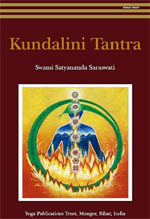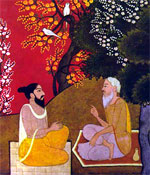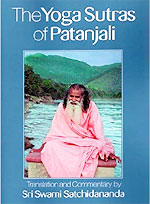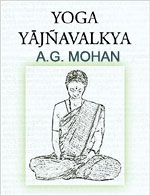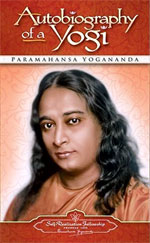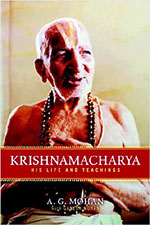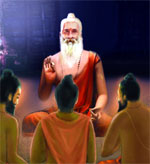
Yoga Book Reviews
YOGA Book Reviews
FREE online books
BooksFree.org | Project Gutenberg | Open Library | ManyBooks | Free-eBooks.net | Bookboon | Smashwords | PDFBooksWorld | PDF Drive | Google Books
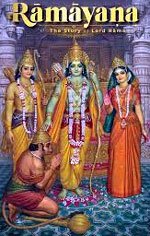 December 28, 2024
December 28, 2024
Ramayana
Human Narrative
I thought War and Peace was the ultimate epic about profound human struggle and drama until I listened to Mahabharata - the longest epic in the world about 2 related families who went to a bloody war over the control of a kingdom. It blew me away - the depth, the grinding agony, the tormented souls, and the tragic loss of loved ones. I would have started a blog on it, but I came upon its twin epic, an earlier story - Ramanaya which talks about righteousness, morality and duty. Somehow, I was drawn to start on Ramayana to begin 2024.
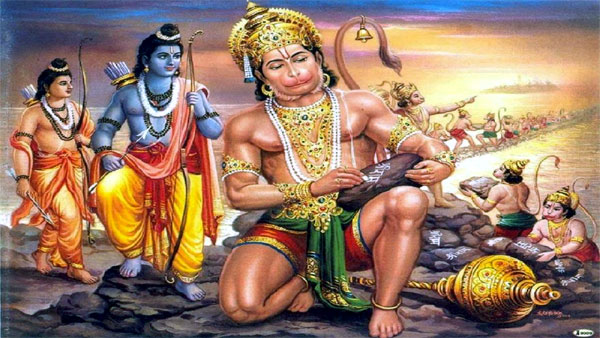
Overview
Ramayana is a story within a story as the author, Valmiki learns of the Ramayana epic from the celestial sage, Narada. Ramayana is the first Hindu epic written by Valmiki around 500-200 BCE. However, even though Valmiki stated that he wrote Ramayana "as it happened" (implying he was there as the events unfolded), constellation dating from the text suggests the events happened 7000 to 5000 BCE. The story features dharma (doing what is right), karma (allowing destiny to take place), loyalty (friendship, husband/wife) and the cosmic order. The epic, composed of 7 books (7 kanda), offered an idealized model for human behavior and social order in the backdrop of Hindu culture and spirituality.
Main Characters
The main characters are Rama (hero, son of King Dasharatha of Ayodhya and an incarnation of the god Vishnu), Sita (devoted wife of Rama), Lakshmana (Rama's loyal brother), Hanuman (the monkey god and Rama's devoted follower) and Ravana (villain, 10-headed demon king of Lanka).
1. Bala Kanda (Book of Boyhood)
King Dasharatha performed a sacrifice to obtain sons and he was blessed with four: Rama, Lakshmana, Bharata and Shatrughna.
Sage Vishwamitra asks the king to have Rama and Bharata help him fight the demons who disrupt his rituals. The king reluctantly acquiesced given that his sons were just in their teens. Rama and Lakshmana show valor by defeating the demons. They accompanied the sage to the kingdom of Mithila (present-day Janakpur, Nepal) where King Janaka was hosting a contest on who could win his daughter Sita (incarnation of the Goddess Lakshmi) for a wife by stringing the mighty bow of Shiva. Rama did and won Sita's hand.
2. Ayodhya Kanda
Rama proved to be the most fit to be the successor to the kingdom. When King Dasharatha chose Rama to be heir to the throne, the people and the palace were delighted. But Queen Kaikeyi, influenced by her servant, Manthara, succeeded in giving the throne to Bharata, Queen Kaykeyi's son. She invoked a promise the king made in the past to grant her any 2 wishes. Kaykeyi then exacted that promise that 1) King Dasharatha grant the crown to her son Lakshmana and 2) exile Rama for 14 years.
Rama upheld the king's promise instead of forcibly taking over the kingdom. Rama, Sita and Lakshmana voluntarily went into a 14-year exile. Sita and Lakshmana didn't have to go with Rama - they could have stayed in the palace and enjoyed royal comforts. But Sita wanted to be with Rama regardless of the circumstances, and Lakshmana was too angry at what was done to Rama.
Upon learning what happened, Bharatha searched for Rama in the forest to give him back the throne. But Rama refused and gave Baratha his sandals as symbol of authority. Baratha rules making it public that he was just there until Rama's return.
3. Aranya Kanda (Book of the Forest)
In the Dandaka forest, the trio encountered sages and demons. They visited hermitages of sages where they received blessings and guidance. They also helped the sages fight the Rakshasas (demons) who were disrupting their pujas. Rama defeats the demons including Surpanakha, Ravana's sister and her other demon allies, Khara and Dushana. In retaliation, Ravana abducts Sita with the help of another demon, Maricha who took the form of a golden dear. Ravana takes Sita to his kingdom in Lanka, across the waters. Rama and Lakshmana searched for Sita. A noble vulture friend, Jatayu, tried to help in the search but lost his life. The rescue for Sita was now the compelling mandate.
4. Kishkindha Kanda
While searching for Sita, Rama and Lakshmana met Hanuman, a devoted Varana from the monkey kingdom, and Sugriva, the exiled monkey king of Kishkindha. Rama helps Sugriva regain his kingdom from his brother, Vali. In the ensuing fierce battle, Rama kills Vali. Sugriva vows to help Rama search for Sita with the help of the Vanaras (monkey people). Hanuman and the rest of the search party headed south, following clues about Ravana's kingdom.
5. Sundara Kanda
Hanuman leaps across the ocean to Lanka where Sita is held captive by Ravana. He made himself small to avoid being conspicuous. Hanuman met Sita, showed her Rama's ring to assure her it was no trick, and passed along Rama's message that she will be rescued.
Ravana has been pressuring Sita to marry him (or else), but she remained devoted to Rama. Hanuman wreaks havoc in Lanka, destroying parts of the city and killing Ravana's warriors. He was captured and his tail burned. Hanuman burned the city instead before escaping and returning back to Rama with news about Sita's location.
6. Yuddha Kanda (Book of War)
Rama, Lakshmana and Sugriva lead an army of monkeys and bears to Lanka. They first built a stone bridge (Rama Setu) connecting the mainland to Lanka (others regard Ramayana as mythology, but in 2012, NASA was able to photograph from space, a submerged 48 km stone bridge from India to Sri Lanka, giving credence that Ramayana perhaps actually happened) and crossed it until they reached Lanka. A great battle ensued marked by valor and divine intervention. Rama kills Ravana's 2 brothers and slays Ravana with a divine arrow, killing the demon god. Sita is freed but had to prove her purity through fire. Rama is praised by the gods for restoring cosmic order. Rama, Sita and Lakshmana return to Ayodhya where Rama is crowned king and ushered an era of peace and prosperity.
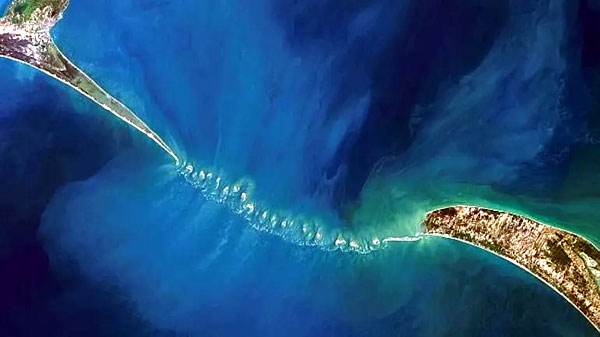
7. Uttara Kanda
Rama reigned with prosperity and happiness in the kingdom. But public doubt persisted about Sita's purity despite her trial by fire in Lanka. To uphold his duty as king, Rama banished a pregnant Sita to the forest (fans call this a virtue of Rama for upholding dharma. I call it cruel and stupid. Sita chose to stay with Rama in the forest when she could have stayed in the kingdom. She already proved her purity by fire. And even if she's not pure, was that her fault? She was abducted against her will. Rama should be shamed for banishing a very devoted wife). Sita took refuge in the hermitage of Valmiki (the sage who wrote about Ramayana...this book). Sita gave birth to twins, Lava and Kusha who grew up unaware of their royal lineage. They were both trained by the wise and adept Valmiki.
Years later, Rama hosts a horse sacrifice where the twins captured the sacrificial horse and defeated Rama's army. Rama learns of their true identity. Valmiki brings Sita back to Rama. Sita, weary of proving her virtue again, calls upon her mother, the earth to take her back. The ground opens up and swallows Sita. Rama was grief-stricken. Rama ascends to the divine to resume his identity as Vishnu.
Lessons
- Dharma - fulfillment of duty even if it means great personal hardship. Rama felt duty-bound to uphold his king even though it was a wrong decision (note: I think it was stupid to uphold a stupid decision that would adversely affect the kingdom).
- Devotion - Sita's unwavering devotion to Rama by choosing to be with him in the harsh forest when she could have stayed in the royal palace with all its luxurious comfort. Same with Lakshmana for choosing to be with Rama.
- Don't make Limitless Promises - King Dasharatha was benevolent as he was stupid for making Limitless Promises. He first made this with Vishvamitra in granting him "whatever you wish" and then refused to have Rama come with him. Then he made this stupid promise again to Queen Kaykeyi Solution? This is a harsh and dark one but there is a way for King Dasharatha to keep his word and still have Rama crowned. He can negotiate with Queen Kaykeyi to nullify the exile of 14 years - Bharata will be crowned and Rama will be exiled (no stipulation of 14 years). He can then exile Rama, and have Bharata crowned - this fulfills his promise. As soon as Bharata is crowned, he can have Queen Kaykeyi and Bharata killed. In the absence of a king, Rama can return from his exile (of maybe 1 day?) and be crowned. Bharata has no fault in this situation, but he will be the sacrificial lamb.
History?
Is Ramayana a historical event? It can be taken as mythology since it invoked the involvement of deities, divine weapons and flying machines (vimanas). But here are the arguments for Ramayana being historical:
- Historical places - the places where the events happened actually exist to this day (Ayodhya, Mithila (present-day Janakpur in Nepal), Chitrakoot, Kishkindha (Hampi in Karnataka), Rameshwaram, and Sri Lanka)
- Consistent cultural and topographical context - the topography and culture mentioned in the text match those that exist to this day in the same locations
- Adam's Bridge / Ram Setu - Rama gathered an army of monkeys and bears and built a stone bridge across the ocean to Lanka, kingdom of Ravena. This bridge was actually photographed from space by NASA giving credence that the story is true.
- "That is how it Happened" - Valmiki, the author, emphatically wrote, "That is how it Happened". If you were writing fiction or mythology, you would not say that.
- Archaeological evidence - archaeological findings in Ayodhya revealed structures consistent with the text dating back to Rama's reign. In Mithila (present-day Janakpur, Nepal), excavation revealed ancient structures described in the text.
- Astronomical evidence - the text mentioned detailed astronomical positions of the stars, planets and eclipses during special events (Rama's birth, exile, war with Ravana) that are consistent with the timeline of 7000 to 5000 BCE
- Cultural continuity - the cultural practices mentioned in the text continue to be practiced today in the same places - Rama's victory over Ravana, Rama's birthday.
- Oral history and local legends - local legends and oral history that continue to this day talk about the events that took place in Ramayana.
- Spread across several countries - Ramayana has spread to Indonesia, Thailand and Cambodia, suggesting historical roots tied to actual events.

Ending Thoughts
Ramayana can be appreciated on many levels. It can be an enjoyable read about a hero's journey, or it can be a cheat sheet for hacking life - it all depends on how deep you want to go down the rabbit hole with it.
This epic has been a foundational cornerstone of Hindu culture and spirituality that to critique it is blasphemous. As virtuous as it is, I cannot say I agree with everything in it. Perhaps it was the right action during its time - Treta Yuga where virtue and dharma were the staple of society. But so many logical things were abandoned for the sake of virtue - walking away from ruling a kingdom because of a king's folly. This could put the entire empire at a balance and disrupt the lives of many. Which is more important? Virtue (over a folly) or the greater good of an empire? Banishing your devoted wife who has proven herself time and time again, over the wild speculation of the public? I question Rama's decision on that. That doesn't even make sense to me.
Overall, I will simply regard Ramayana as an excellent story about a hero's journey. I also applaud the lesson of loyalty which is rare nowadays - loyalty of Bharata to Rama, loyalty of Hanuman to Rama and loyalty and devotion of Sita to Rama. I think they are the true heroes of this epic. I'll stop at that.
--- Gigit (TheLoneRider)
YOGA by Gigit ![]() |
Learn English
|
Learn English ![]() |
Travel like a Nomad
|
Travel like a Nomad ![]() |
Donation Bank
|
Donation Bank ![]()
Ramayana Movies
- Ramayana - to be released 2026,
- Ramayana: The Legend of Prince Rama - 9.2/10 IMDB rating, 1993, PG, 2h 15m
Leave a comment?
Next story:

![]()
Next Yoga story:
»» back to Yoga
»» back to Book Review
»» back to Homepage
ARCHIVE 2025:
JAN |
FEB |
MAR
1970 |
1973 |
1975 |
1976 |
1979 |
1981 |
1996 |
2000 |
2001 |
2002 |
2003 |
2004 |
2005 |
2006 |
2007 |
2008 |
2009 |
2010 |
2011 |
2012 |
2013 |
2014 |
2015 |
2016 |
2017 |
2018 |
2019 |
2020 |
2021 |
2022 |
2023 |
2024 |
2025 |
ALL BLOGS
